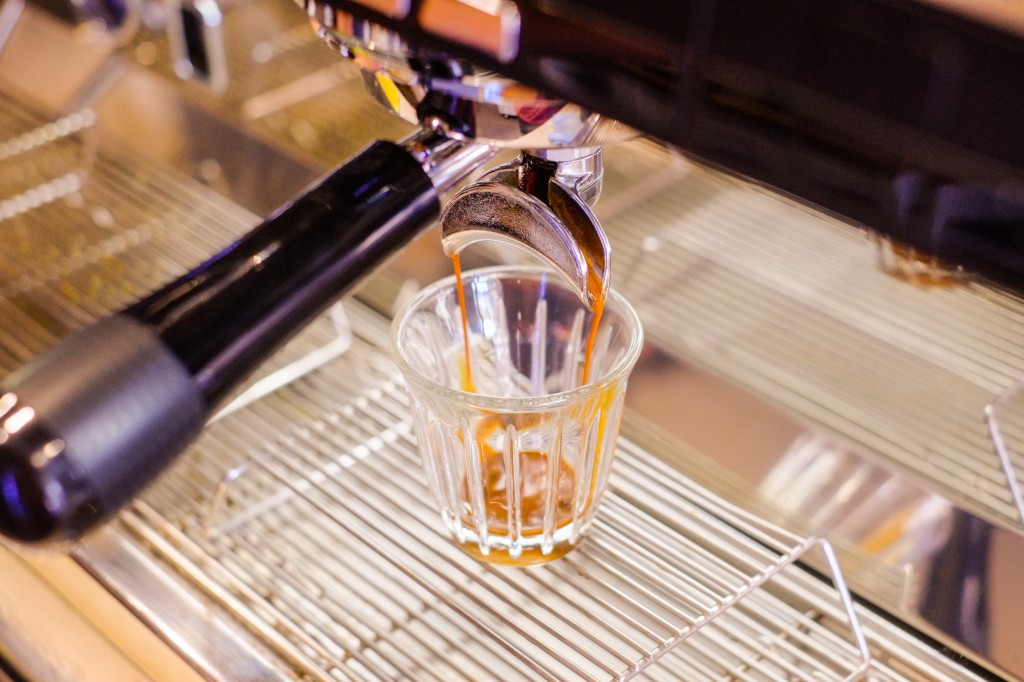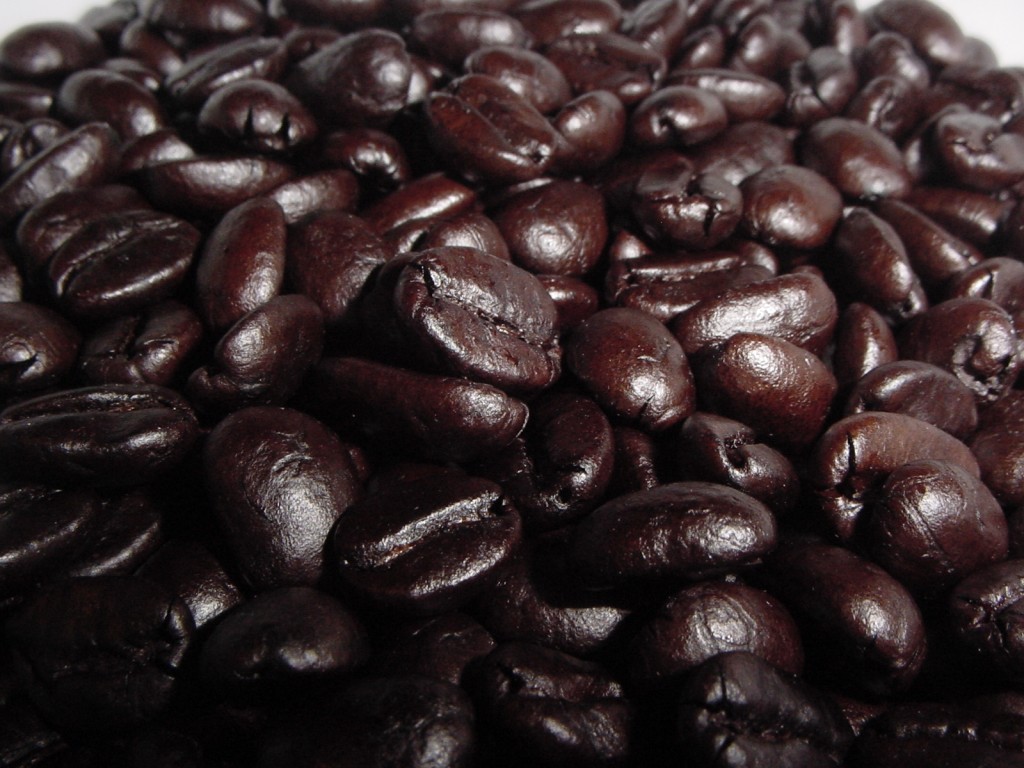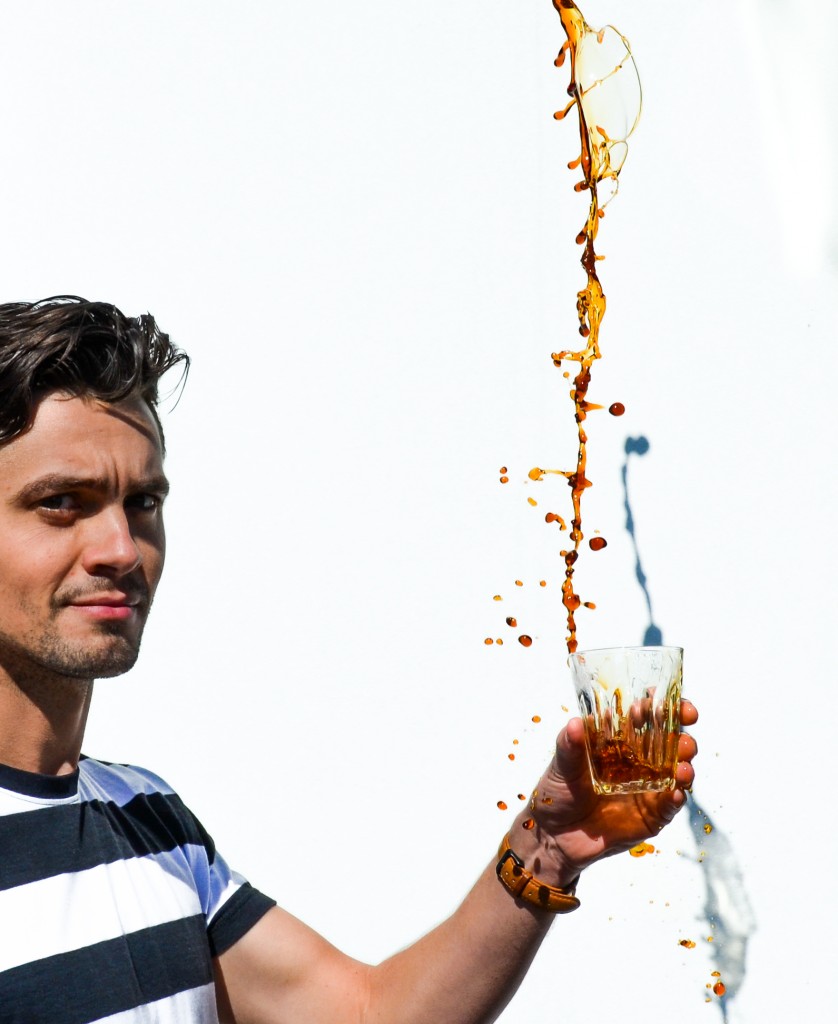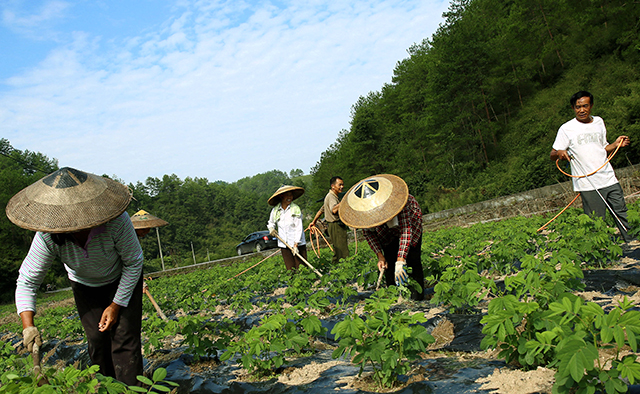Extraction War part II: the third Coffee Revolution
Not long ago, we announced the extraction war: Italian espresso vs. Ristretto, a term commonly used in the professional coffee industry. It gets a mixed response, and for good reason: old terms don't necessarily apply. When we talk about Italian espresso extraction run ("about", calm down, everybody) 30 seconds, ristrettos run 15, we rely on a few assumptions, thanks to everything from technology to supply chain transparency, no more applications are required. What does this mean? Is the first article just a joke? Um... Right. Do those old rules still apply? Well, it all depends on...

Dual Ristretto is not very popular now, which is the old standard on the road. Picture by https://instagram.com/timjcoffee
The specification of coffee yesterday
Until recently, almost all the coffee had been baked. Do you know which flavors look very similar in each mix? Tips, nuts, chocolate, caramel, toffee... -and, you know, the general taste of "coffee"? This is because, no matter where the coffee comes from and how it is handled, companies are chasing the same thing everywhere to meet the expectations of end users. This means that people close to or just past the barbecue will not laugh at such a word called coarse crack what baking. Some companies take it a step further than to produce black, usually oily, dark roasted we use the same as "espresso".
Roasting and especially beyond the second crack step by step carbonises coffee more and more. If handled carefully, this baking method will give you a familiar coffee flavor and retain some of the natural flavor of the fruit. However, for many people, this is a taste and can only enjoy milk. Otherwise, it is often too strong, and sometimes you can even enjoy black ash. In fact, many companies choose bean roast to mix their knowledge based on 95% of the market will be milk coffee. This is a safe choice, especially for small companies.
About Robusta? Although it has almost nothing from the professional scene, it is a considerable part of the history of mixed coffee culture. It's not surprising that stout is cheap, high-yielding, low-altitude friendly, and generates a lot of bubbles. It's also higher in caffeine, so you get more kick coffee and less coffee. With a few exceptions (if anyone knows them, please let us know), there is another reason for the unpleasant black baking in the past.
You may ask, but on all coffee machines, what about the standard KMB pressure? Where did that come from? Well, it turned out to be a convenient midpoint when we used a highly variable lever instead of a typical setting.

Slayer-3 bar? 6 bar? 9 bar? Unlimited pre-infusion? Sure, why not! Picture by https://instagram.com/timjcoffee?
For baristas, this means that coffee is usually only feasible with certain parameters. Double ristrettos we are talking about ensuring a good oil almost insurance policy, not carbon ash extraction produced during the roasting process. This also means that coffee has a limited shelf life; roasted black coffee, will oil and oil, in turn, edamame bean rancidity. This does not mean that all coffee is like this, but these are a series of guidelines and assumptions that many of us rely on.
Today's change in the coffee world
So, what changed? Although there is no point in trying every change in the third wave of the coffee industry, for me, for me, two are out of reach. There is no particular order:
Roasting:
There is growing interest in lighter roasting due to baking experiments and suggestions from specialty coffee shops. Like anything new, there is more and more pain and rebound. Coffee is just out of coffee. Not to mention, when black, it tastes acidic sweet and sour sauce, who?!
The problem is that light roasting is difficult. With a serious lack of formal structure, the trainer roasting is often a closed world, what is produced, is grassy, economically underdeveloped, and sour. It's not surprising that people want to return to the world of deep baking.
So why not stick to the method of trying and testing the second crack in each furnace? Well, think about it. Coffee is like a steak. If you order it, you will taste the beef. You have to do well, you will taste how it is cooked, and there are a few "beef notes."


Black as night, but pure evil and lighter, sweeter, full of natural breath. Picture by https://instagram.com/timjcoffee
Fortunately, the growing pain of light burning is disappearing. Some companies, which have invested their time rather than illusory money, are now able to make the most of their work and coffee. It's light because they can now turn more complex jelly beans into sweet (pie, fruit) simple sugar (sweet). This means that you don't just taste how roasted; you also taste local, processed, variety (S)-everything that makes coffee so amazing. Like real nails, you won't barbecue in all the flavors, which can really change your mind about what coffee actually tastes like. Exciting, isn't it?
Supply chain knowledge:
Baristas, most people don't go to places like Ethiopia, and know that most of the coffee they use is processed and what kind of impact it will have on coffee. They now often work directly with the stove. They use machines that give them control of the pressure in the extraction and water temperature. They have grinders, preheat coffee, and scale to 1/10 grams. Ten years ago, most baristas thought that & # 39; Brazil & # 39; an origin, which has completely changed. Now, they may know the farmer's name, and there is a lot of coffee on his farm from, if it is a hybrid, if it is processed in a central laundry station. In fact, they may even have their own barbecue!

This Christmas pearl scale: barista, let's make sure of accuracy. Https://instagram.com/timjcoffee
Break the coffee mold
What is the means of extraction?
This means that instead of in each other's throat "the right way to extract coffee, we should accept our different methods." We have the opportunity to limit coffee by creating a feedback loop that will benefit service, customers, and even farmers. Do you add 17.5 grams in 22 seconds for 50g output because this is the "right" way? After you reach those parameters, try every possible variable: water temperature, different doses, different tamping, etc.? Without knowing all the coffee work around the world, and giving all the progress and knowledge that exists, how can anyone think that what others are doing is wrong? Instead of assuming that it is wrong for a person to run to extract a dose of 19.5g for 50 seconds, we should ask them why there is something special. Considering that a single espresso was once a negligible 7G standard dose (still in many places), you would think we would realize that the rules are really out!

You might say that the extraction parameters are now in the air... Picture by https://instagram.com/andyamacpherson
This experiment and an open mind is what makes coffee from a bottle of caffeine to worthy of the same awe of products such as wine. Those old extraction methods do surround; Ristretto itself means "limit". Baristas now have the opportunity to put the old methods aside and work together to achieve the origin of all potential efforts. The key to ensuring what happens is to approach new information in a generous spirit.
Do you think some of your extraction parameters are a little different? Are you a rule-breaker who should wave a maverick and think they have found the perfect proportion? Share knowledge here, I hope we can benefit from it!
Written by Timothy Alexander Jay www.perfectdailygrind.com
Written and photographed by Timothy Jay and Tanya Newton editors.
Perfect daily coffee blog.
Original link: http://www.perfectdailygrind.com/2015/08/coffee-extraction-wars-part-2/
Important Notice :
前街咖啡 FrontStreet Coffee has moved to new addredd:
FrontStreet Coffee Address: 315,Donghua East Road,GuangZhou
Tel:020 38364473
- Prev

How many global brand coffee shops do you have?
Unlike Gucci's coffee shops in Italy and Japan, the restaurant in IAPM in Shanghai is called 1921 Gucci. It implies that the Italian luxury brand was founded in 1921, when it was just a small door in Florence selling imported suitcases. GUCCI's first coffee shop, which opened in 2006, is located in Milan's famous Galler II.
- Next

The economic benefit of popularizing and planting coffee in Yunnan is considerable.
On August 11, farmers of coffee trees professional cooperatives fertilized and weeded in the planting base in Linkou Town, Tong Dong Autonomous County. Last year, the cooperative successfully introduced coffee trees from Yunnan for trial planting. This year, it adopted the model of company leasing land to fund technology and farmers' contracted land to provide labor services to promote the planting of coffee trees in surrounding villages and towns. At present, coffee trees are growing happily, and it is expected that the output value per mu this year will be
Related
- The milk tea cup becomes smaller?! Overlord Tea Girl launches a new "Return to Yunnan" series
- Accused of selling counterfeit and high-priced coffee beans! Well-known boutique coffee brand "Oukelao" bowed and apologized!
- How to make espresso dumplings? Can I eat coffee and glutinous rice balls together?
- Save the unformed and stagnant powder cakes in one second! What is the problem with stagnant water in the powder bowl of the espresso machine?
- What does hand-brewed coffee stop mean? Why is it not recommended to make coffee by hand?
- Is it normal to smell like coffee? Why does coffee smell like alcohol? What's wrong with the strong smell of cold extract ice dripping ice brewed coffee?
- How to solve the problem that hand-brewed coffee extraction takes too long? Why is the water flowing so slowly when making coffee?
- The main points of making Australian white coffee, the proportion details, how does Australian white properly foam and blend the flowers?
- Can ice water make cold extract coffee? What is the difference between room temperature water and ice water for making cold coffee?
- What milk is best for making latte and white Dirty coffee? What is the difference between different brands of fresh milk and pure milk for making coffee?

